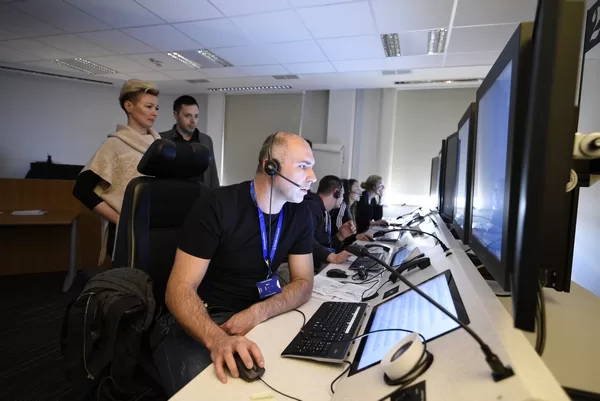Despite an estimation that the European air traffic level amounts to merely 2 to 3 % of the total emissions having a negative impact on the environment, different ways of reducing that impact are still sought. In that sense, in 2016 CCL has participated in a multinational project implementing the free route airspace on the South East Axis (SEAFRA).
Following the night implementation of the concept, as of 8 December three air navigation service providers (ANSPs) – Croatia Control Ltd., SMATSA, and BHANSA – have offered the airspace users and airlines an H24 possibility to plan and conduct flights free of fragmentation by state or AoR borders, thus introducing an H24 concept of cross-border free route airspace above 9,900 m. In more detail, the concept enables the use of airspace free of classical routes, where airlines plan their flights directly between entry and exit points of a specified airspace.
That is the first case of implementing free route airspace in Europe over the territory of four states –in this particular case – Croatia, Bosnia and Herzegovina, Serbia, and Montenegro.
The idea of such a large-scale project was initiated by ATM experts of the ANSPs responsible for ANS provision in the four states, with a common goal of improving ATS safety and efficiency as well as protecting the environment by reducing fuel consumption, CO2 and NOx emissions.
An approximate estimate of the maximal fuel savings and emissions reduction per day is a shortening of routes per in total ca 2,880 NM, which corresponds to the following savings:
| Savings estimate | 1 day (max) | kg/year (max., depends on airlines’ planning) |
|---|---|---|
| Fuel | 9.3 t | 3.4 million kg |
| Carbon dioxide (CO2) emissions | 30 t | 11 million kg |
| Nitrogen oxide (NOx) emissions | 110 kg | 40 thousand kg |
The monitoring of the CO2 and NOx emissions reduction will be carried out by comparing the airplanes’ fuel consumption and greenhouse gases emissions between the en-route network and the free route airspace by means of the NEST tool.
It is important to point out that the SEAFRA actions were taken in line with the Regulation (EU) No 716/2014, i.e. 5 years prior to 1 January 2022 – the date of the planned unlimited free use of airspace over 9,000 m across Europe.
The SEAFRA project is one of the key achievements of the Single European Sky framework, independent of state or FAB borders, with the common goal of improving safety and efficiency, as well as the European air traffic capacity.
Alongside the mentioned SEAFRA project, CCL is going to implement the FRA concept in collaboration with its other neighbouring states, with the establishment of free route airspace above 6 states – which would include the current SEAFRA and SAXFRA – being the first step towards that goal. The SAXFRA includes the airspace above Slovenia and Austria, which have also implemented the FRA concept during the whole day as of November 2016. The merging of the two FAB initiatives is planned for the first quarter of 2018.
Further cooperation on the FAB concept shall include the FAB CE FRA concept, the Gate One FRA and the cooperation with the Italian ANSP ENAV, which has also implemented the FRA concept above Italy.
